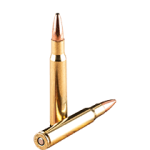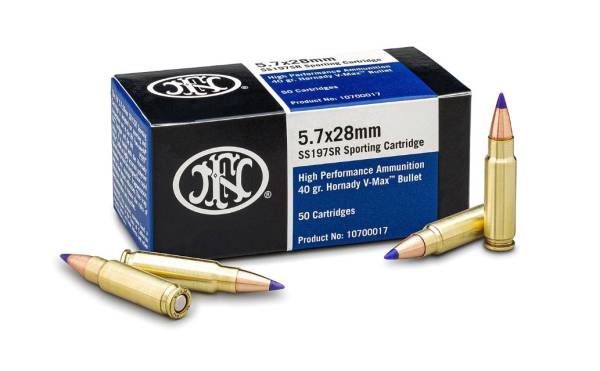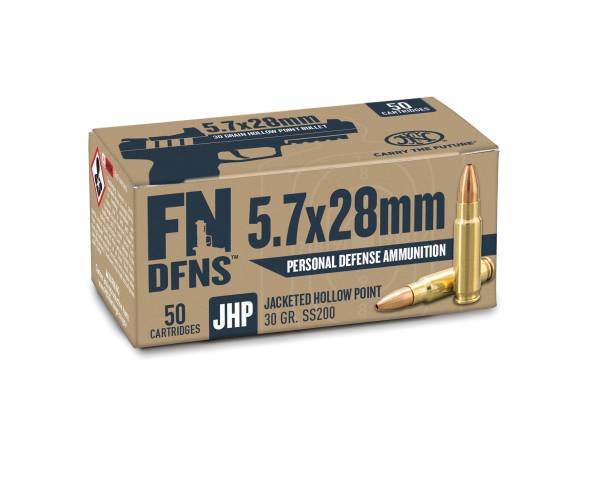Description
Known for its versatility and accuracy, the .30-06 has been used for hunting everything from prairie dogs to moose. With over 100 years of service to hunters, military and law enforcement, .30-06 ammo is a proven performer. In 1906, the U.S. Army adopted the .30-06 to stay ahead of the advancing technology of firearms and ammunition. The U.S. military based its primary battle rifles on this cartridge for the next half century. And although created for battle, the .30-06 was also rapidly accepted by civilian shooters. At first the round was not standardized, though this later changed.
The United States Army continued to use the round well into the 1980s, and it is still a prized round of civilian shooters. Its name comes from a combination of the bullet calibre (.30”) and the year the round was introduced (1906). This is why it was originally known as the “30 Government ‘06.” The full name today is the .30-06 Springfield. Grain Options and 30-06
According to Gun Digest, it’s the only round you need for just about anything. No less an authority than Field and Stream called it the greatest cartridge of all time. This is in part due to the wide array of bullet weights available for the cartridge, including:
125 and 130 Grain: The appropriate bullet weight for varmint shooting.
150 Grain: One of the preferred weights for deer hunting, with a quick speed and an explosive impact.
165 Grain: This is the porridge that Goldilocks ate, sitting in the Golden Mean of all bullet weights available for the 30-06.
180 Grain: Another strong contender for the best all-around weight for a 30-06. This, much like the 165, offers the perfect balance between speed and stopping power.
200 Grain: It’s not very fast, but there’s not much this bullet won’t be able to take down. This is great for anything bigger than a deer, all the way up to what you might find on the African plains.
It was the Spanish-American War that revealed major differences between the rifles of the U.S. Army and the rifles of other countries, both in cartridge and caliber. The most common military cartridge of the time, the .30-40 Krag, was being outdone by faster, farther-reaching bullets with spitzer points that retained accuracy and energy at greater ranges. Arising from this need, the .30-06 was an improved version of the .30-03.
This new cartridge, designated M1906, was built to regularly engage targets as distant as 1,000 yards and was lethal to a range of 3,400 yards (if the muzzle was elevated to approximately 45 degrees).
The Improvement of the 30-06
The 30-06 was part of a broader adoption of lighter-weight rounds at the beginning of the 20th century. The previous service round, the 30-03, was a round-nosed bullet failing to keep up with the changes in the world of military hardware.
The .30-06 Springfield (as the round was originally officially known, or catalog number M1906) was the American foray into the field. Range estimates were initially overrated. During World War I, the American military primarily used British and French machine guns. When switching over to American weapons chambered for the 30-06, they found a 50-percent drop in effective range.
Post-war testing eventually sorted out the problems with the 30-06 range. By 1926, rounding the cartridge and changing the jacket led to increased speed leaving the muzzle, which in turn led to increased range.
The M1906, including the variations that followed, was the primary cartridge for rifles and machine guns in the U.S. military, until being replaced with the 7.62 NATO cartridge in 1954. Until then, the .30-06 was chambered in rifles that came to be well known, including the M1903, M1917 and M1 Garand. Machine guns that fired the .30-06 include the M1917, M1919 and the BAR. The military even re-chambered some its Gatling guns to also fire the M1906.
The civilian market embraced the .30-06, which is why virtually every major firearms manufacturer has produced at least one rifle for this cartridge. It is available for sale in all common rifle action configurations, and is even chambered for a pistol as well. .30-06 ammo remains arguably the most used round for hunting in the United States, as it will easily harvest all game animals in the Continental U.S. The competitive shooting community has also contributed to its popularity.
30-06: King of the Wildcats
Part of the reason for the round’s popularity is that the wartime surplus market had over two billion rounds floating around. At the time, the military’s regulations said that the oldest forms of ammunition needed to be trained first, which means that several generations of the military got their earliest rifle training with the 30-06. The round enjoyed a military renaissance when it was discovered that the range of the .30 M1 ball ammunition was not safe for existing ranges. There was a scramble to get as much 30-06 ammunition as possible back into circulation to replace all of the 30 M1 that the military could no longer safely use.
Another reason for the round’s popularity is the sheer number of weapons chambered for it, some of which include:
Browning automatic rifle
Famage Mauser
M1 Garand
M1903 Springfield
M1917
M1918 Enfield
M1919
M1941 Johnson
The 30-06 was the primary round of American servicemen during both World Wars, the Korean War and the Vietnam War – which was the last time the round saw extensive use in the military during wartime, becoming primarily a civilian round after that conflict. The round was also used by the Belgian military. In 1908, Winchester released its Model 1895, a lever-action rifle that was the first commercial-grade hunting rifle chambered for the 30-06.
What’s more, the 30-06 was popular as a parent round for wildcatted cartridges and was also extremely popular among hand reloaders. This is because of the sheer amount of them lying around.
The .30-06 is loaded in many different ways. Common bullets weigh between 100 and 220 grains, and types of bullets run the gamut from eXergy to FMJ and SP. Major manufacturers make a point of offering their newest hunting and match bullet technologies in .30-06, since demand for this cartridge has been solid and steady for more than a century.
Check out Winchester 30-06 Ammo page for the latest from Winchester!
30-06 vs 308 Win
One round that the 30-06 is frequently compared to is the 308 Win. This is because the two rounds have the same caliber, with the main difference being the overall length of the round. Here are some of the other differences between the .308 Win and the .30-06:
Accuracy: This is where the rubber meets the road for a lot of the differences between any two rounds of ammunition. In fact, the 308 largely displaced the 30-06 for accurate target shooting, leading to the shrinking of the size of the bullseye. Today the two are roughly equivalent for accuracy, thanks to improvements in ballistics technology. Likewise, an apples-to-apples comparison of the two calibres will find little significant difference between the two as regards to which is best for hunting.
Rifle Selection: If you want a wider array of rifles to choose from, there’s just no question that the 308 Winchester is the winning round here. This is due to the legacy of the 308 Win’s status as the primary NATO round for decades. Even in the realm of bolt-on hunting rifles, there’s just no comparison when it comes to the two for rifle selection.
Ammo Selection: The 30-06 ammunition on the market today is mostly for hunting. The intensely accurate match-grade ammunition is more readily available in the 308, though not non-existent in the 30-06. For those into hand reloading, the 30-06 offers far more variety than does the 308.
As with many similar rounds, the answer to “which one is better?” relies almost completely on what you wish to accomplish. And, as always, there are subtle differences between ammo depending on the manufacturer, even when we’re discussing the same caliber.
The 30-06 continues to be popular and widely available, ensuring that it will likely continue to dominate among the most common choices for hunters and sport shooters wanting a cartridge with long-range accuracy and power.
FAQ
What does 30-06 ammo mean?
When referring to .30-06 ammo (pronounced thirty-aught-six), it describes the caliber introduced to the United States military in 1906 and was used as the Armed Forces primary rifle cartridge for over 50 years. Technically called the .30-06 Springfield, this round has been described as both the greatest cartridge of all time and the only cartridge you’ll ever need. It features a total cartridge length of 3.34 inches and a .30 caliber projectile (the “06” references the year it was introduced). The .30-06 round is used for hunting and is popular among those who make their own wildcat rounds.
What is 30-06 ammo good for?
The .30-06 Springfield was originally a military cartridge and served as the primary rifle cartridge for the United States armed forces for over 50 years. The cartridge is known for its versatility and can harvest all North American game, which makes it a favorite among many hunters. Since its commercial production began, the .30-06 cartridge has been available in various configurations and bullet weights, which influenced its popularity among handloaders of wildcat rounds.
How common is 30-06 ammo?
The .30-06 cartridge is a popular hunting cartridge. With its versatility and the variety of configurations commercially available, .30-06 ammunition has been referred to as “the only cartridge you’ll ever need.” Not only is the ammo great for harvesting game of all sizes, but the vast amount of .30-06 military surplus, both in firearms and ammunition, has led to an increase in the round’s popularity.
What sizes are there for 30-06 ammo?
The standard commercial round for .30-06 ammo measures 3.34 inches in total length and comes in various bullet weights. Hunters can find light-weight varmint rounds in 125 and 130 grain (gr) all the way through 200 gr bullets that can harvest North America’s largest game. The most popular rounds feature a bullet weight of 165 or 168 gr, which is considered by many to provide the perfect balance of power and velocity. Many handloaders make wildcat rounds in .30-06, which can add even more configurations to this versatile cartridge.
Why do people say 3 out 6 when referring to .30-06 ammo?
The term for .30-06 is “thirty-aught-six.” Thirty refers to the projectile’s size, which in this case is .30 caliber (the bullet measures .308 inch). The aught references an Old English word that means zero, while the six is associated with the year 1906 when the cartridge was adopted by the United States military.
What is the best 30-06 ammo for long range shooting?
Although .30-06 ammo comes in a wide range of configurations, most agree that when it comes to long-range shooting, 165-168 grain (gr) bullets tend to be in the “goldilock zone,” where the speed and power of the projectile balance for optimal performance. Most ammunition companies that manufacture .30-06 ammo offer this or similar rounds, some specially made for long-distance shots. Opt for ammunition by Hornady 30-06 ammo, Federal 30-06, or other reputable brands.
How does the 223 compare to 30-06 ammo?
When comparing .223 ammo to .30-06, the .30-06 is noticeably larger, measuring more than a full inch longer than the smaller round. The larger cartridge is loaded with over 5,000 more pounds per square inch (psi) than the .223, and has over double the energy output. While the .30-06 can take all of North America’s big game, the .223 is limited to varmint and small-to-medium game.
How does the 7mm Rem compare to 30-06 ammo?
When it comes to terminal performance on medium to big game animals, it is hard to beat the effectiveness of the 30-06 Springfield and the 7mm Remington Magnum – this begs the question: Which is better? For a comprehensive caliber comparison, make sure to read our article on .30-06 vs 7mm.
What 30-06 ammo has the most penetration?
Multiple factors, such as distance and the game in question, influence how deep a bullet can penetrate. Luckily, all hunting round configurations in the .30-06 Springfield have deep penetration and stopping power. As the velocity of the projectile decreases with bullet weight, the heavier, 200 grain (gr) .30-06 bullets may not penetrate through large game the way the 165 gr does a whitetail deer, but they create massively fatal wounds with their energy.





